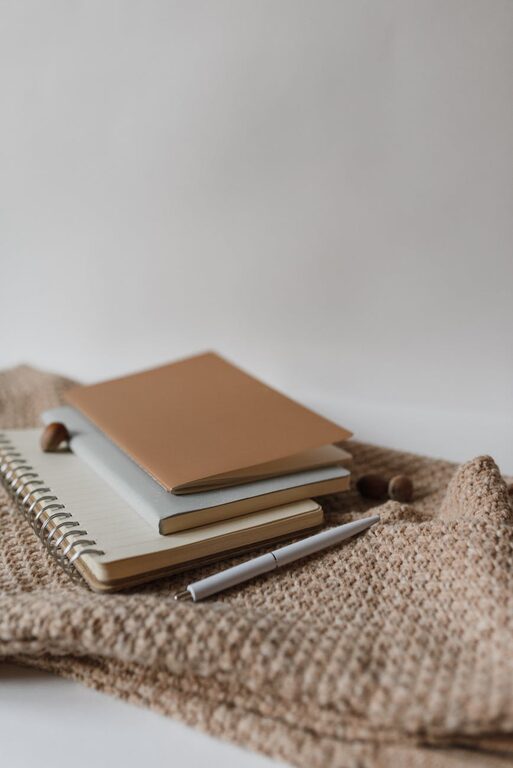
Choosing the right notebook can make a big difference in how often you use it. Whether you want to jot down ideas, manage your to-do lists, or keep a journal, a notebook that suits your preferences and lifestyle encourages you to reach for it day after day. But with so many options out there, how do you find a notebook that truly fits your needs? In this post, we’ll walk through key factors to consider so you can pick a notebook you’ll actually love using.
Understand Your Purpose
Before browsing options, ask yourself why you want a notebook. Are you:
– Taking notes in meetings or classes?
– Tracking goals and habits?
– Sketching or doodling ideas?
– Writing daily journal entries or creative stories?
– Planning your schedule or projects?
Knowing your primary use helps narrow down features like size, paper type, and layout.
Consider Notebook Size and Portability
Notebooks come in a range of sizes—from pocket-sized to large formats. Think about where and how you’ll use it:
– Small (A6 or pocket-sized): Easy to carry everywhere, great for quick notes or lists on the go.
– Medium (A5): A popular balance between portability and writing space; fits most bags and desks.
– Large (A4 or bigger): Ideal for detailed notes, sketches, or presentations, but less portable.
If you plan to carry your notebook daily, a size that fits comfortably in your bag or pocket can boost usage.
Choose the Right Paper Type and Quality
The feel and performance of notebook paper can strongly affect your writing experience.
– Paper weight: Measured in grams per square meter (gsm). Heavier paper (80gsm and above) prevents ink bleed-through and feels sturdier.
– Paper color: White offers high contrast, while cream is easier on the eyes and preferred for journaling.
– Texture: Smooth paper is great for fountain pens and general writing; textured paper suits sketching and mixed media.
– Ruled, blank, dotted, or grid:
– Ruled lines help keep writing neat—good for note-taking or journaling.
– Blank pages support sketches and creativity.
– Dotted or grid offers structure without overwhelming—popular for bullet journals and planners.
Try a few options to see what paper style feels most comfortable to you.
Binding and Durability
How a notebook is bound affects both its lifespan and writing convenience.
– Spiral-bound: Lays flat and folds back easily, but may wear out faster and pages can tear out.
– Hardcover: Provides durability and protection; ideal for long-term use and carrying around.
– Softcover: Lightweight and flexible but less protective.
– Sewn binding: Pages are stitched, so the notebook lies flat and is more durable than glued bindings.
If you want to keep notes for years, opt for high-quality bindings and covers.
Design and Aesthetics Matter
A notebook that looks attractive to you increases the chance you’ll use it regularly. Think about:
– Cover design and colors that inspire you.
– Additional features like elastic closures, ribbon bookmarks, or pen holders.
– Branding or themes that resonate with your personality.
Personal touches can turn a simple notebook into a favorite companion.
Special Features to Consider
Many notebooks offer extra functionality:
– Perforated pages: Easy to tear out notes.
– Numbered pages: Helpful for indexing and organizing.
– Pocket folders: For loose papers, receipts, or stickers.
– Pre-printed templates: For planners, habit trackers, or calendars.
Decide if these extras support your workflow or might distract you.
Budget and Brand
Notebooks vary from inexpensive to premium prices. While you don’t need to spend a lot, investing in a quality notebook can be worthwhile if it increases your motivation and enjoyment.
Popular brands like Moleskine, Leuchtturm1917, and Rhodia are known for quality but try local or lesser-known brands too—you may find a gem that fits perfectly.
Try Before You Commit
If possible, visit a stationery store and test notebooks by:
– Writing a few lines to check paper quality.
– Feeling the cover and binding.
– Visualizing if the size fits your bag or workspace.
This hands-on approach saves you from buying something you won’t use.
Tips for Maintaining Your Notebook Habit
Once you have your ideal notebook, here are some ideas to keep using it:
– Keep it visible on your desk or in your bag.
– Set a daily or weekly time to write.
– Don’t worry about perfection—write freely.
– Use the notebook for both work and personal projects.
– Combine it with other tools like pens, sticky notes, or apps.
Final Thoughts
Choosing a notebook is a personal process influenced by your lifestyle, preferences, and intended use. By focusing on purpose, size, paper, binding, and design, you can find a notebook that feels just right. When you enjoy your notebook, writing becomes easier and more satisfying. Take your time exploring options—you might just find a companion that inspires creativity and keeps your ideas organized for years.
Happy writing!
